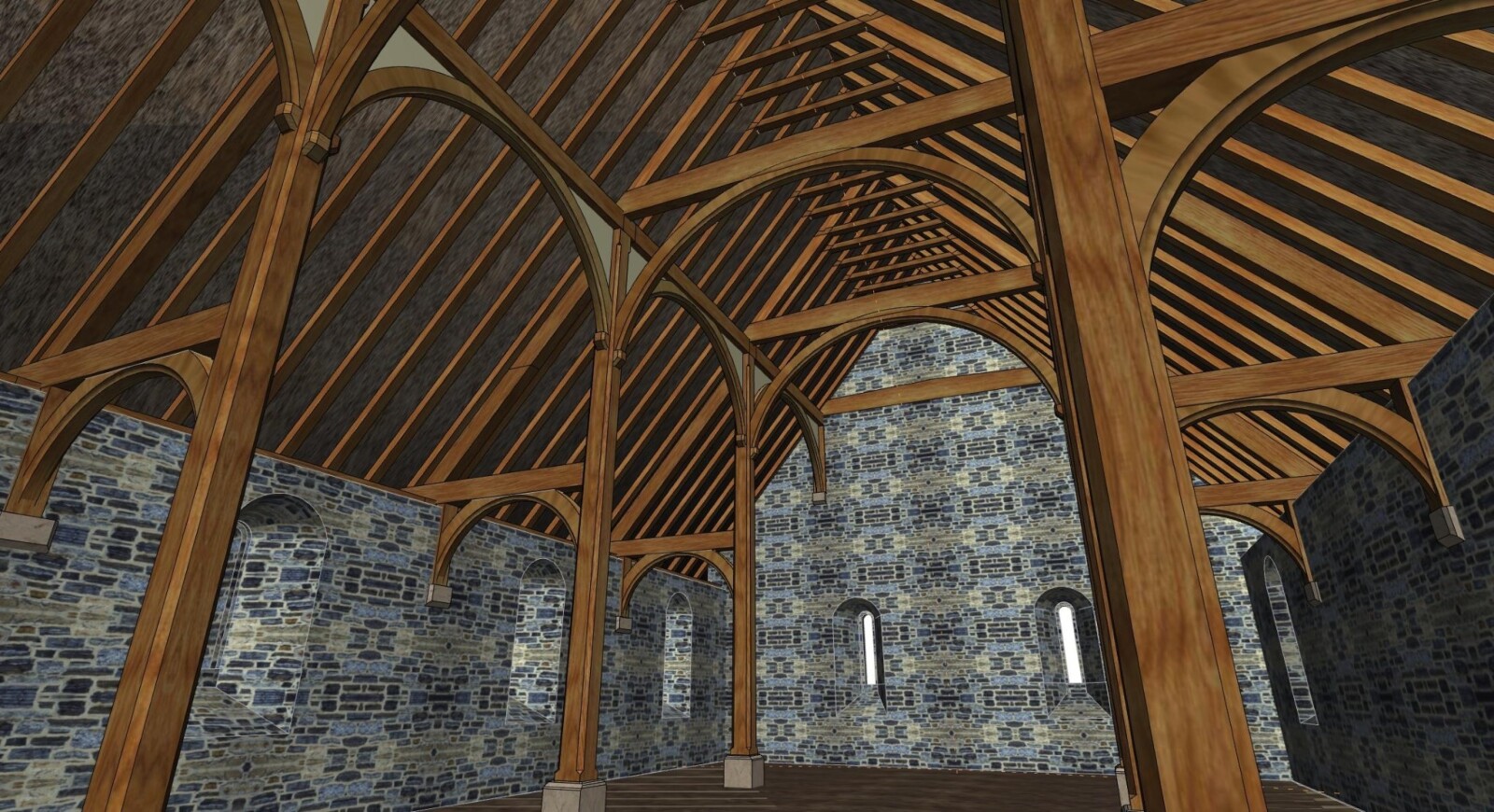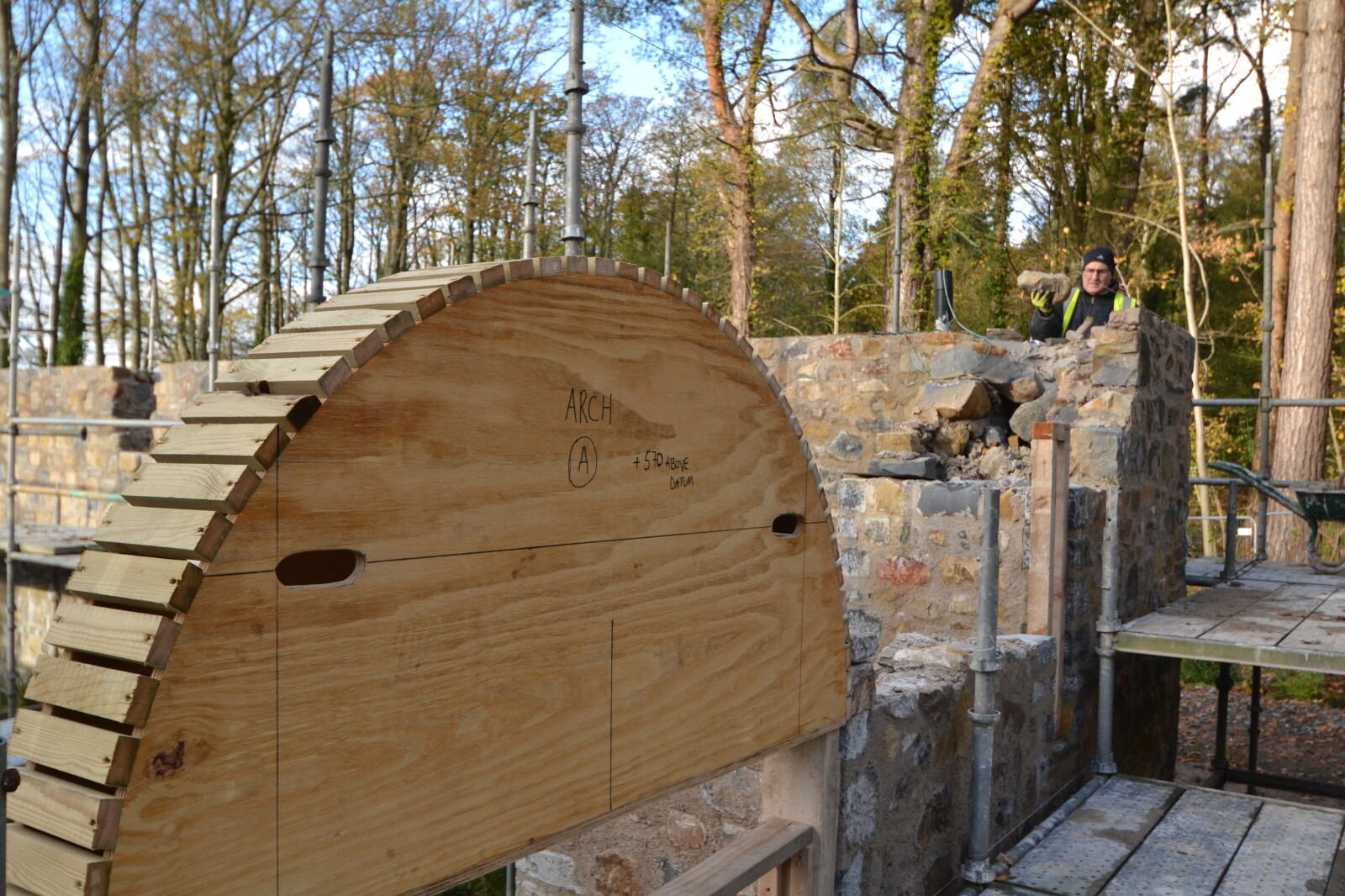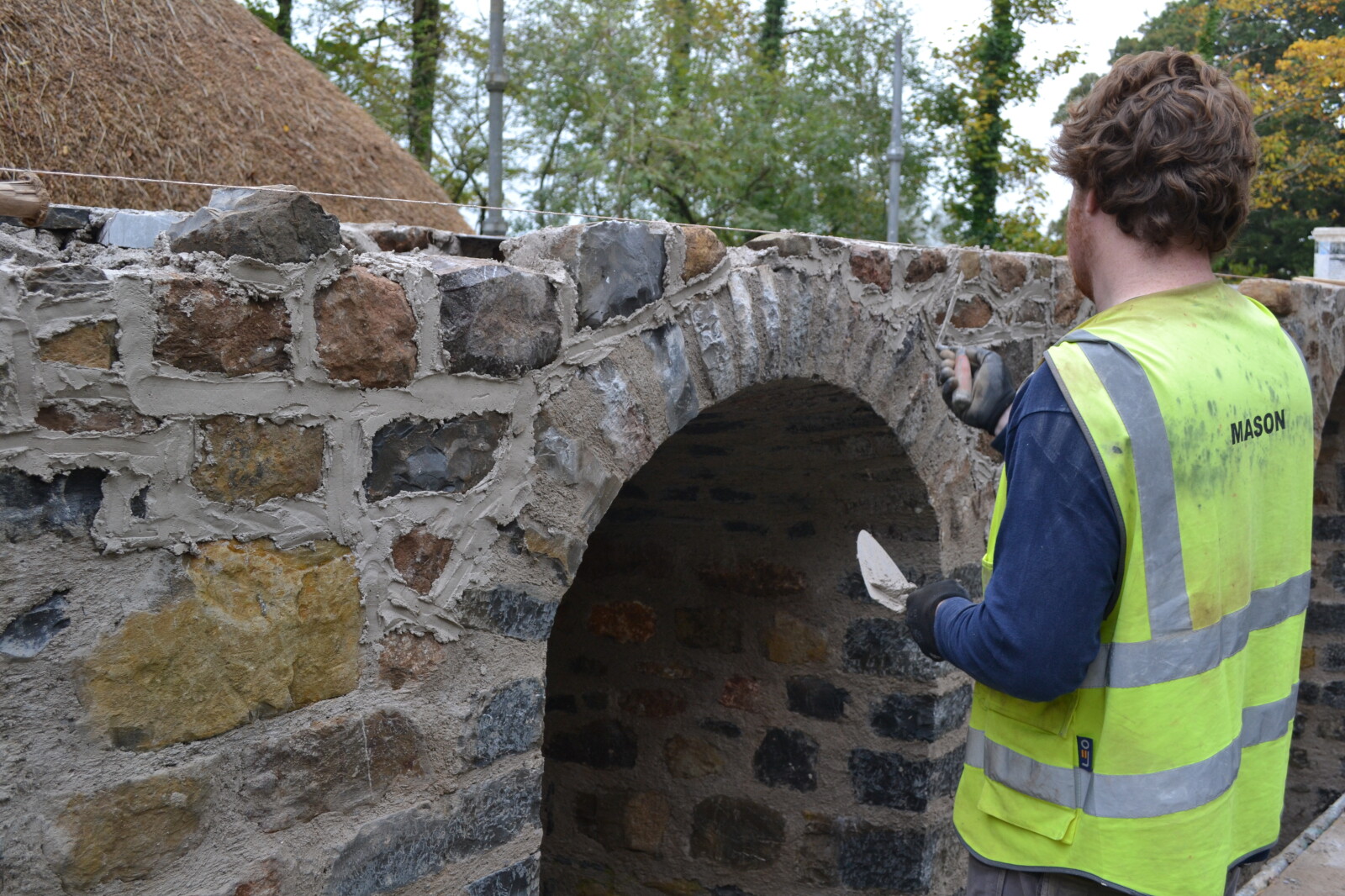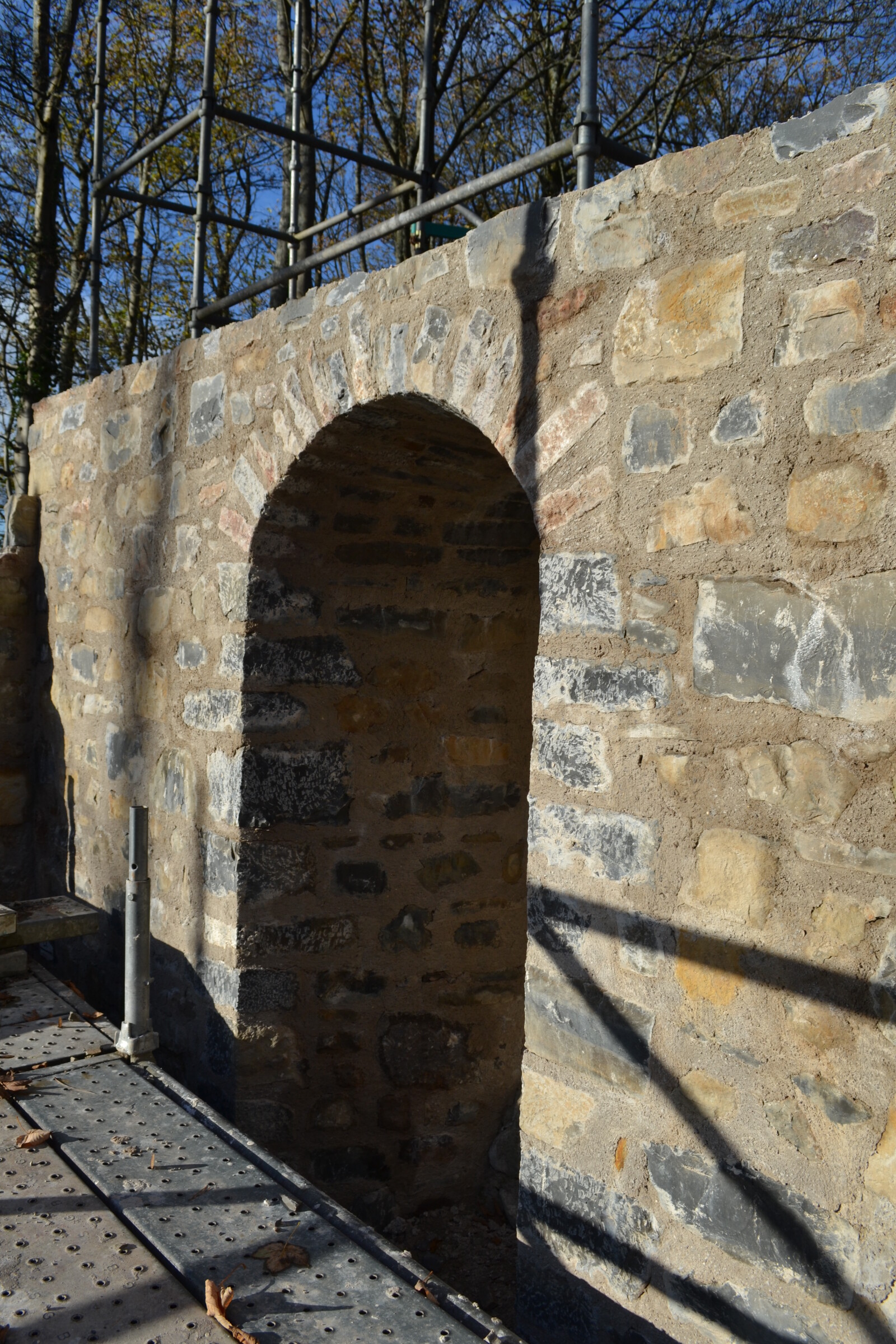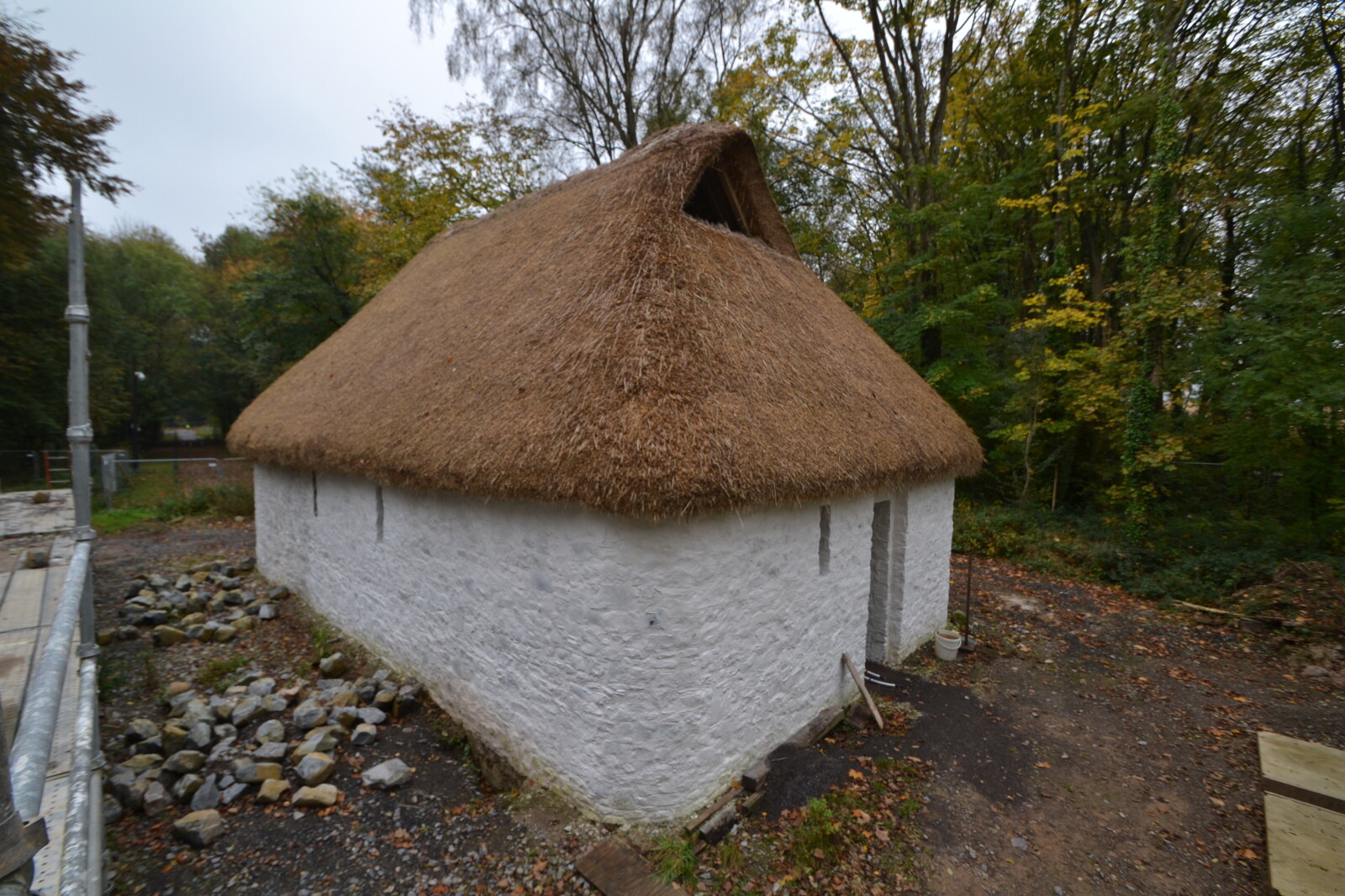Llys Llywelyn: framing the past
, 6 January 2016
Spare a thought for our stonemasons who have been working tirelessly re-creating a 13th century royal hall from Anglesey. Our team have mortar mixers and steel scaffolding which weren’t available at the time, but in truth the process has changed very little. It is simply a case of laying one stone at a time. The long walls of the main hall have reached their full height and all ground-level window reveals have been finished. Wooden formers were made to hold the arching stones in place until the mortar had hardened. The masons will continue to build the nine meter gables until the Carpenters Fellowship are ready to install the internal timber frame that will help take the load of the roof.
The drawing on the right provided by Tim Potts from the Carpenters Fellowship allows us see what the interior of the hall will look like after the frame has been installed. This frame along with the stonework will form an aisled hall typical of the period. The design of the frame features semi-circular arched bracing which was informed by research into two surviving buildings: the Bishops Palace at Hereford and the Great Hall at Leicester Castle), while the stonework recreates that of the royal court at Rhosyr, Anglesey. For more info visit: https://museum.wales/blog/2015-11-09/The-Bishops-Palace-Hereford and https://museum.wales/stfagans/buildings/llys-llywellyn/. The oak frame will look wonderful, but be prepared for it to be painted in typical Romanesque patterns such as chevrons in alternating colours.
Our research work currently focuses on recreating period wall-hangings and furnishings. One of the more challenging aspects of this build is successfully meshing two disparate worlds. On the one hand we are tasked with re-creating the world of Llywelyn the Great, ruler of Gwynedd 1200–1240 and owner of the court at Rhosyr. On the other hand we have to comply with the requirements of our own 21st century world: visitor/staff well-being and hazard mitigation. No doubt this will be the first Welsh hall with underfloor heating and an emergency lighting system.

